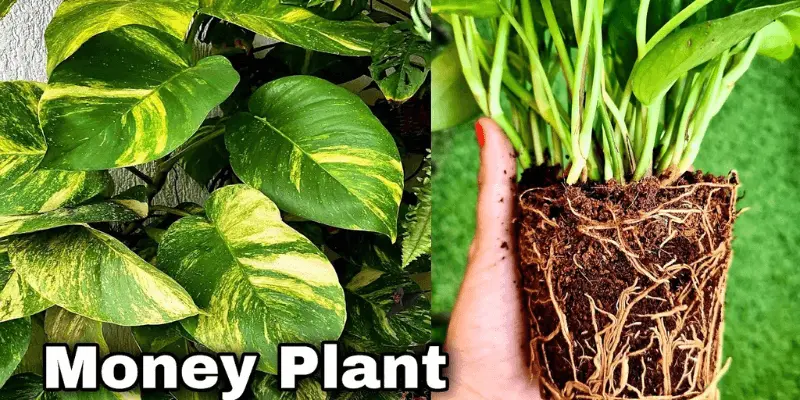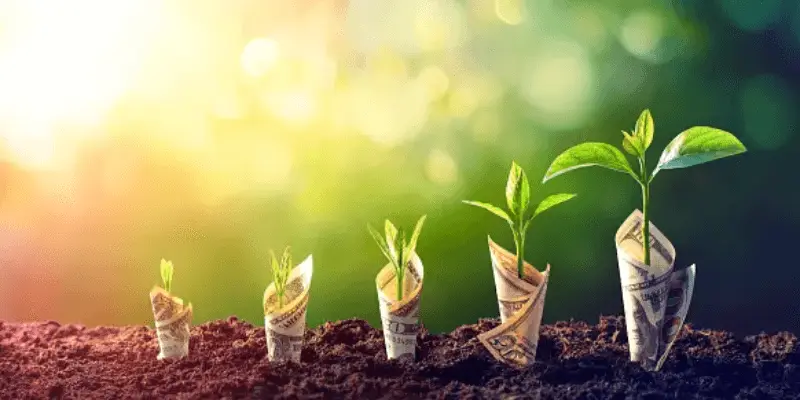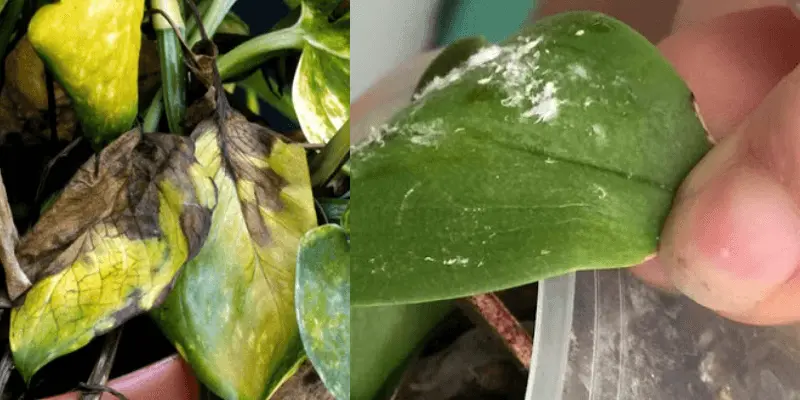Money Plant Indoor Care & Disease: How To Grow Money Plant in water

Money Plant Indoor
Money plants, scientifically known as Epipremnum Aureum, have a remarkable set of qualities that make them a popular choice for indoor gardening enthusiasts. Their heart-shaped leaves come in a variety of patterns, with options for solid green or variegated foliage. Beyond their aesthetic appeal, these plants are excellent air purifiers, improving indoor air quality by removing pollutants. These plants also have a symbolic significance, as they are believed to bring good luck and financial prosperity, adding to their allure. Their adaptability and flexibility make them an excellent choice for both experienced gardeners and those looking to introduce greenery into their homes.
Table of Contents
Mythical Significance
Although money plants are not actually mythical in nature, they have a special and somewhat mythological significance in various cultures. These plants are often associated with folklore and superstitions related to prosperity and good luck. In many traditions, it is believed that having these plant in your home can attract wealth and financial luck. Some even say that placing these plants near the entrance of your home or in the wealth sector can enhance these effects. While the science behind these beliefs may be lacking, the mythical significance of these plants continues to fascinate and intrigue people, making them a valuable addition to homes around the world.
Money Plant & Feng Shui
Wealth and Prosperity: Money plants are often associated with attracting wealth and financial prosperity. Placing them in the wealth sector (the southeast corner of your home or a specific room) is believed to enhance this effect.
Positive energy: These plants are considered natural air purifiers, and by improving indoor air quality, they contribute to a healthier living space. Clean air promotes positive energy and well-being.
Balance and Harmony: Feng Shui emphasizes the balance of the five elements namely wood, fire, earth, metal and water. Money plants, with their lush foliage, represent the element of wood, and adding this element to your home is believed to bring balance and harmony.
Eliminate negative energy: These plants are thought to absorb negative energy, making them an ideal choice for homes where emotional stress or conflict is common.

To maximize the feng shui benefits of your money plant, consider the following tips:
- Place these plants in the southeast or wealth sector of your home, office, or certain rooms.
- Make sure the plant is healthy and flourishing, as a healthy plant is believed to have strong positive energy.
- Wash and clean the leaves regularly to maintain a positive flow of energy.
How To Grow Money Plant
Choose the right pot and soil by choosing the right pot for your plant. Choose a pot with drainage holes to prevent water from collecting at the bottom. A pot slightly larger than your plant’s current size allows room for growth. For soil, a well-draining mix works best. You can use a mixture of potting soil and perlite to ensure proper drainage, preventing root rot. Place your plant in a location where it can get plenty of natural light, but avoid direct sun exposure, which can burn the leaves. Partial shade or filtered sunlight, such as through curtains, is best for maintaining healthy plants. Watering Techniques Proper watering is very important. Wait until the top inch of soil feels dry before watering your plant. During the growing season (spring and summer), you may need to water more frequently. When you water, make sure you moisten the soil thoroughly, but never let the plant sit in standing water. Drain any excess water from the pot to prevent root rot.
Temperature and Humidity These plants prefer temperatures between 65°F and 85°F (18°C to 29°C). Avoid exposing them to cold drafts or sudden temperature fluctuations. These plants thrive in average humidity levels indoors. If your home is particularly dry, consider washing the plant regularly or using a humidity tray to maintain proper humidity levels.

Pruning and Training Pruning and training are essential to maintaining a healthy and attractive plant. Cut off yellow or dead leaves to keep the plant vibrant. You can also pull back the tips to encourage bushy growth. Money plants can be trained to climb or trail a support. Stakes or trellises are useful tools to guide their growth in the desired direction.
Protect against pests and diseases Inspect your plant regularly for common pests such as mealybugs, spider mites and aphids. If you see any bugs, take immediate action. Be careful about overwatering, as this can lead to root rot. Ensure good air circulation around the plant to prevent fungal problems.
Fertilization During the growing season (spring and summer), feed your plant a balanced, water-soluble fertilizer every 4-6 weeks. Follow package directions for proper dilution and use.
Repotting Money plants grow relatively slowly, so they don’t need frequent repotting. However, if you notice that your plant has outgrown its pot or appears root bound, consider repotting it in a slightly larger container during the spring.
Money Plant In Water
Growing money plants (Epipremnum aureum) in water is a visually pleasing and popular way to cultivate this resilient indoor plant. To begin, choose a transparent glass or plastic container such as a vase or jar to facilitate observation of the root and access to light. Take healthy cuttings from the plant, making sure each cutting has at least two nodes, the small spots on the stem that give rise to leaves and roots. Remove any leaves near the cut end. Submerge the cut end of the stem in a container filled with room temperature water, making sure that at least one node is below the surface of the water. Place the container in an area with indirect sunlight, avoiding direct exposure to the sun, which can overheat the water. Maintain temperatures between 65°F and 85°F (18°C to 29°C) for best growth. Change the water every 1-2 weeks to prevent stagnation and algae growth. Rinse the container thoroughly during water changes. In a few weeks, you will observe roots growing from the submerged nodes. Allow the roots to reach a suitable length, usually a few inches, before transplanting the cutting into well-drained soil. This soil may consist of a mixture of potting soil and perlite. After transplanting, water the new potted plant well. Growing plants in water is not only aesthetically pleasing, but also a rewarding way to propagate and share this beautiful plant with others.

Money Plant Indoor Care
To care for your indoor money plant, use a well-draining pot with drainage holes, indirect sunlight, water when the top inch of soil is dry, a temperature between 65°F and 85°F. Maintain, prune regularly, check for pests, and fertilize during the growing season. Repot when necessary to ensure your plant thrives.
Money Plant Diseases
Money plants, while relatively hardy, can still be susceptible to certain diseases. Being able to identify and deal with these problems quickly is critical to the health of your plant. Here are some common indoor money plant diseases and their associated treatments:
Root Root
Symptoms: Yellowing of leaves, wilting, and musty odor.
- Treatment: Trim affected roots and repot plant in fresh, well-drained soil. Adjust your watering routine to prevent overwatering.
Mealy Bugs
Symptoms: White, cottony spots on plant stems and leaves.
- Treatment: Remove mealy bugs with a soft brush or cloth, then treat with neem oil or insecticidal soap. Ensure good air circulation to prevent further infection.
Spider Mites
Symptoms: fine webbing, yellow or split leaves.
- Treatment: Separate the affected plant, wash it gently with water, and apply an insecticidal soap. Wash the plant regularly to maintain moisture and prevent mites.
Aphids
Symptoms: Small, soft-bodied insects on leaves and stems.
- Treatment: Spray the plant with a mixture of water and a few drops of dish soap. Wash off the aphids after a few hours.
Fungal diseases
Symptoms: Brown spots or rot on leaves.
- Treatment: Remove affected leaves, improve air circulation, and avoid overwatering. In severe cases the use of a fungicide may be necessary.
Yellow Leaves
Symptoms: Leaves turn yellow due to poor light conditions or overwatering.
- Treatment: Adjust the plant’s lighting, water less, and make sure the pot has adequate drainage.

Money Plant Benefits
Indoor money plants (Epipremnum aureum) offer several important benefits:
- Air Purification: Money plants are effective natural air purifiers, removing common indoor pollutants, thereby improving the quality of the air you breathe.
- Low maintenance: They are easy to care for, making them a great choice for both experienced and novice gardeners. They require minimal attention and can adapt to different indoor conditions.
- Aesthetic Enhancement: Money plants add a touch of natural beauty to your interiors with their unique, heart-shaped leaves. Varieties with different leaf patterns are especially visually appealing.
- Positive energy: In some cultures and practices such as feng shui, money plants are associated with good luck, wealth and positive energy, making them meaningful additions to homes and offices.
- Low Light Tolerance: plants can thrive in low light conditions, making them versatile and suitable for rooms with limited natural light.
- Easy Propagation: Money plants can be easily propagated from stem cuttings, allowing you to share them with others or easily enhance your indoor garden.
- Educational Value: Money plants serve as a valuable educational tool for teaching people of all ages about plant care, gardening, and environmental responsibility.
- Symbolic Gifts: These are often given as gifts that symbolize growth, fortune, and goodwill to the recipient, making them thoughtful gifts with symbolic significance.




